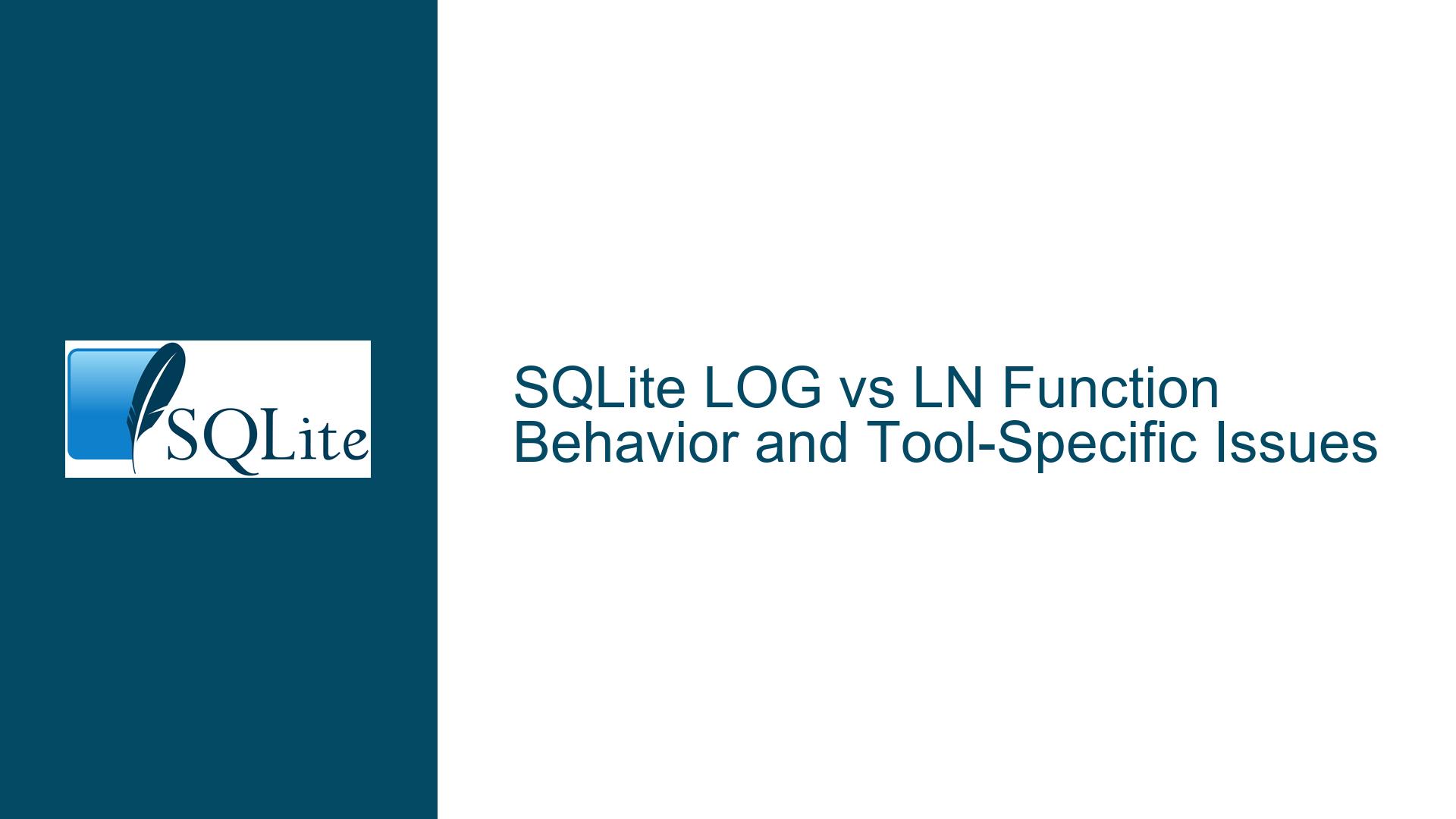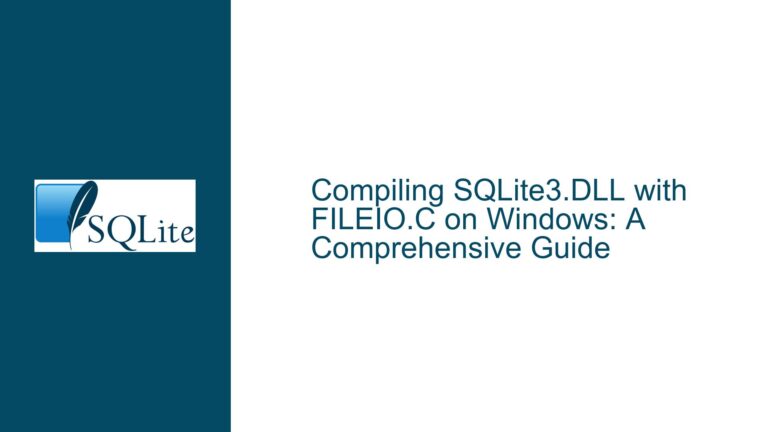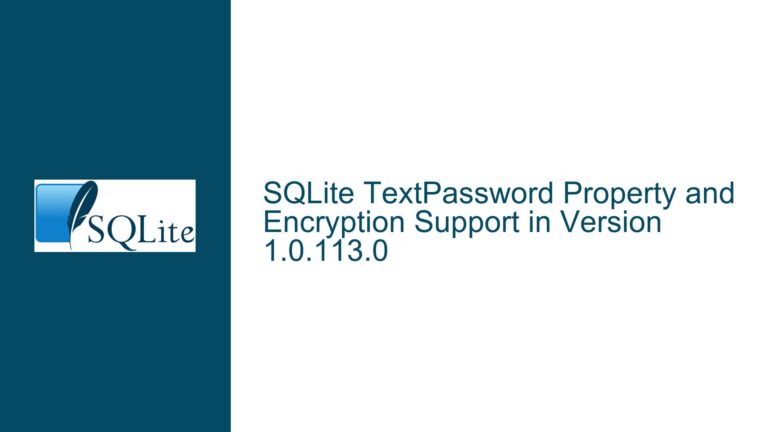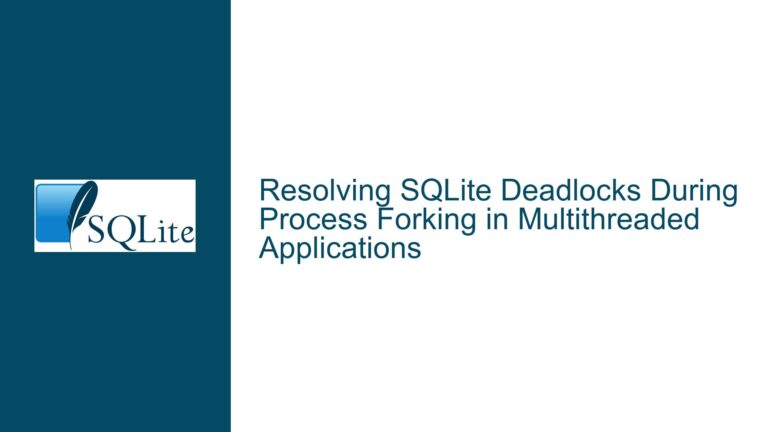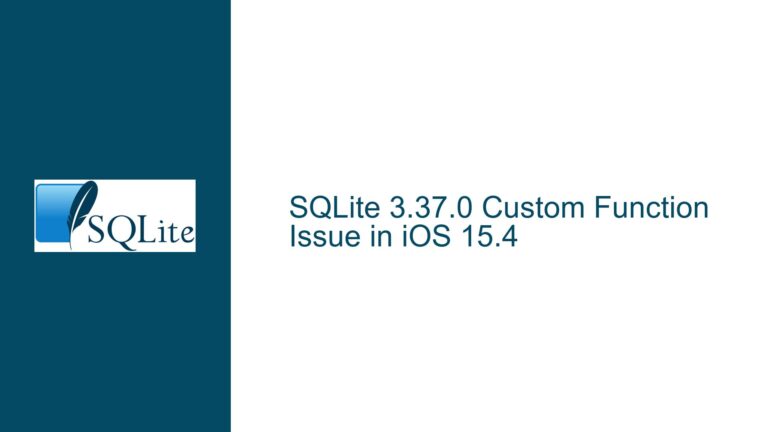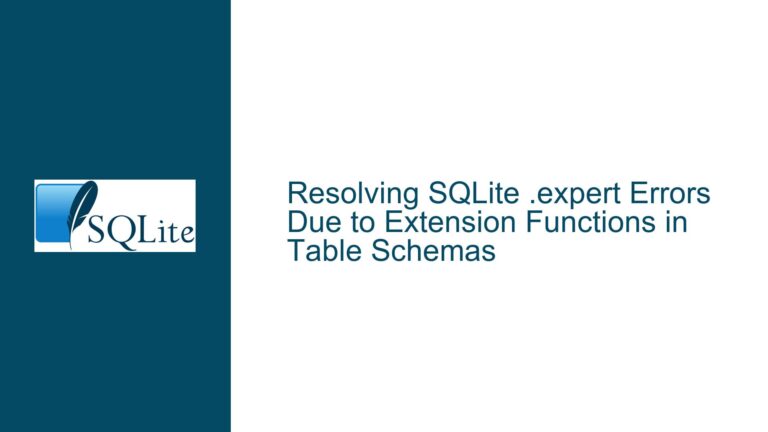SQLite LOG vs LN Function Behavior and Tool-Specific Issues
Understanding SQLite’s LOG, LOG10, and LN Functions
The core issue revolves around the behavior of logarithmic functions in SQLite, specifically the LOG, LOG10, and LN functions. According to the SQLite documentation, LOG and LOG10 are intended to compute the base-10 logarithm, while LN is meant to compute the natural logarithm (base-e). However, discrepancies arise when these functions are used in certain tools or environments, leading to unexpected results or errors.
In SQLite, the LOG function is documented to compute the base-10 logarithm, and LN should compute the natural logarithm. However, in some cases, users observe that LOG behaves as if it were computing the natural logarithm, and LN is either missing or produces errors. This inconsistency can be traced back to the specific implementation of SQLite being used, particularly when interfaced through third-party tools or drivers.
Possible Causes of LOG and LN Function Discrepancies
The primary cause of the observed discrepancies lies in the tool or driver being used to interact with SQLite. In this case, the issue was traced back to DBeaver, a popular database management tool, and its use of the SQLite JDBC driver (sqlite-jdbc-3.39.3.0.jar). The driver had a regression that caused the LOG function to behave as the natural logarithm (LN) and the LN function to be unrecognized. This regression was introduced in version 3.35 of the SQLite JDBC driver and was later fixed towards the end of the previous year.
Another potential cause could be the version of SQLite itself. While SQLite’s core functionality is consistent across versions, certain functions or behaviors might differ slightly between versions, especially when considering extensions or custom builds. However, in this case, the issue was not with SQLite itself but with the JDBC driver used by DBeaver.
Additionally, the environment in which SQLite is being used can also play a role. For instance, different operating systems or configurations might lead to varying behaviors, especially if the SQLite binary or library being used is not the standard one provided by the SQLite team. This is less common but still a possibility worth considering when troubleshooting such issues.
Troubleshooting Steps, Solutions, and Fixes
To resolve the issue with the LOG and LN functions in SQLite, follow these detailed steps:
Verify the SQLite Version and Environment:
- First, ensure that you are using the correct version of SQLite. You can check the version by running the command
sqlite3 --versionin your terminal or command prompt. This will confirm whether you are using the standard SQLite binary or a custom build. - If you are using a third-party tool like DBeaver, check the version of the SQLite driver being used. In DBeaver, this can typically be found in the connection settings or the driver configuration.
- First, ensure that you are using the correct version of SQLite. You can check the version by running the command
Test the Functions Directly in SQLite:
- Open a direct SQLite session using the command-line interface (CLI) or a standard SQLite GUI tool that does not rely on third-party drivers. Run the following queries to verify the behavior of the
LOG,LOG10, andLNfunctions:SELECT LOG10(10); -- Should return 1.0 SELECT LOG(10); -- Should return 1.0 (base-10 logarithm) SELECT LN(10); -- Should return approximately 2.30258509299405 (natural logarithm) - If these queries return the expected results, the issue is likely with the tool or driver you are using, not SQLite itself.
- Open a direct SQLite session using the command-line interface (CLI) or a standard SQLite GUI tool that does not rely on third-party drivers. Run the following queries to verify the behavior of the
Update or Replace the SQLite Driver:
- If you are using a tool like DBeaver, ensure that you are using the latest version of the SQLite JDBC driver. As mentioned in the discussion, the issue was fixed in a recent update to the driver. You can download the latest version from the official repository or the tool’s update manager.
- If updating the driver is not an option, consider switching to a different driver or tool that does not exhibit this issue. For example, you could use the native SQLite CLI or a different database management tool that uses a more stable or up-to-date SQLite driver.
Check for Tool-Specific Configurations:
- Some tools, like DBeaver, allow you to configure the behavior of certain functions or override default settings. Check the tool’s documentation or settings to see if there are any options related to SQLite function handling. Disabling any custom configurations or overrides might resolve the issue.
Report the Issue to the Tool or Driver Developers:
- If the issue persists and you have confirmed that it is not related to SQLite itself, consider reporting it to the developers of the tool or driver you are using. Provide them with detailed information about the problem, including the SQLite version, driver version, and any relevant error messages or logs. This will help them identify and fix the issue in future updates.
Use Alternative Functions or Custom Implementations:
- If you need to work around the issue temporarily, consider using alternative functions or custom SQL implementations to achieve the desired results. For example, you can compute the natural logarithm using the
LOGfunction with a base ofe(approximately 2.71828):SELECT LOG(10) / LOG(2.71828); -- Approximates LN(10) - While this is not an ideal solution, it can serve as a temporary workaround until the underlying issue is resolved.
- If you need to work around the issue temporarily, consider using alternative functions or custom SQL implementations to achieve the desired results. For example, you can compute the natural logarithm using the
By following these steps, you should be able to identify and resolve the issue with the LOG and LN functions in SQLite, ensuring that your queries produce the expected results regardless of the tool or environment you are using.
